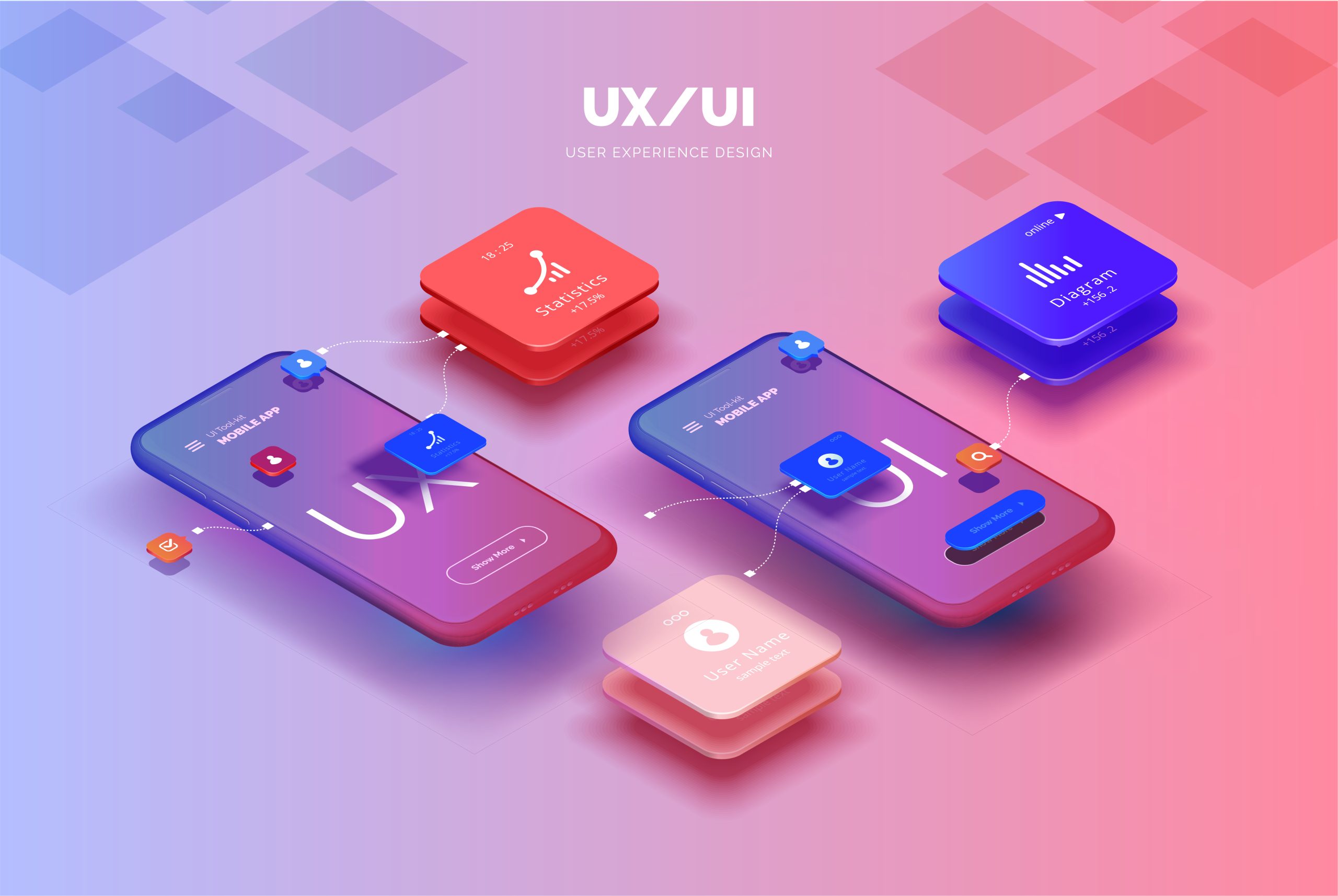Artificial Intelligence (AI) has profoundly transformed the landscape of UI/UX design, offering innovative solutions that streamline workflows, enhance creativity, and improve user experiences. This blog delves into the top AI tools that are shaping the future of UI/UX design, making it more efficient, personalized, and accessible. By integrating AI into their toolkits, designers can now automate mundane tasks, generate creative content, and gain predictive insights, thus dedicating more time to crafting exceptional user experiences.
The integration of Artificial Intelligence (AI) tools into modern design workflows marks a significant evolution in the field of UI/UX design. These tools have become indispensable for designers seeking to enhance creativity, efficiency, and effectiveness in their projects. Below, we explore the importance of AI tools in modern design workflows:
1. Enhanced Efficiency
AI tools automate repetitive and time-consuming tasks such as creating wireframes, generating code for prototypes, and testing layouts. This automation frees up designers to focus on more strategic and creative aspects of their projects, significantly increasing workflow efficiency.
2. Improved Creativity
With features like automatic color palette generation, design suggestion systems, and content creation capabilities, AI tools provide designers with a wealth of creative options. They can experiment with different designs quickly and easily, leading to more innovative and creative outcomes.
3. Personalized User Experiences
AI's ability to analyze large datasets enables the creation of highly personalized user experiences. By understanding user preferences, behaviors, and interactions, designers can tailor UI/UX elements to meet the specific needs of their audience, enhancing user satisfaction and engagement.
4. Predictive Analytics
AI tools offer predictive analytics capabilities, allowing designers to forecast trends and user behaviors. This insight helps in making informed decisions about design strategies, ensuring that products remain relevant and user-friendly over time.
5. Streamlined Collaboration
Many AI design tools come equipped with features that facilitate collaboration among team members, including developers, designers, and project managers. Shared workspaces, real-time feedback, and version control improve the coordination of efforts and ensure that everyone is aligned on the project goals and progress.
6. Accessibility
AI technology plays a crucial role in making designs accessible to a wider audience, including people with disabilities. It can automatically check for compliance with accessibility standards and suggest improvements, ensuring that products are usable by everyone.
7. Rapid Prototyping and Testing
AI tools can quickly turn concepts into interactive prototypes and simulate user interactions, providing immediate feedback on design decisions. This rapid prototyping and testing capability allows for quick iterations, helping to refine products efficiently.
8. Cost-Effectiveness
By automating various aspects of the design process, AI tools can significantly reduce the time and resources needed to complete projects. This efficiency not only speeds up the design process but also reduces costs, making high-quality design more accessible to companies of all sizes.
How is AI Being Used by UI/UX Developers?
Automating Design Tasks
How it Works:
AI tools are being utilized to automate numerous repetitive and time-consuming tasks within the design process. This includes generating wireframes, creating layout designs, and even prototyping. By using AI for these tasks, designers are able to allocate more time towards the creative aspects of UI/UX design.
Impact:
The automation of these tasks significantly speeds up the design process, allowing for quicker iterations and enabling designers to explore a wider range of creative solutions. Tools like Adobe XD's Auto-Animate feature or Sketch's smart layout capabilities exemplify how AI can streamline the design workflow.
Enhancing User Experience with Personalization
How it Works:
AI analyzes vast amounts of user data to understand behavior patterns, preferences, and needs. This analysis is then used to tailor the user experience to individual users, offering personalized content, layouts, and interactions.
Impact:
This level of personalization improves user engagement and satisfaction, as products become more aligned with the unique needs and expectations of each user. Tools like Google Analytics and Adobe Sensei are leveraging AI to offer insights that drive personalized experiences.
Improving Accessibility
How it Works:
AI is used to ensure that designs are accessible, conforming to standards that make apps and websites usable by people with disabilities. This includes checking color contrasts, ensuring text is readable by screen readers, and predicting how different users might interact with a design.
Impact:
By making designs more inclusive, AI helps create a more equitable digital environment, ensuring that technology is accessible to all users, regardless of their physical abilities.
Streamlining User Testing
How it Works:
AI tools can simulate user interactions, analyze user testing data, and provide actionable insights in real time. This includes understanding how users navigate through a design, which elements attract the most attention, and where users might encounter difficulties.
Impact:
This rapid feedback loop allows for quick iterations of the design, ensuring that the final product is as user-friendly as possible. Tools like Lookback and UserTesting.com utilize AI to streamline the user testing process.
Predictive Design Analytics
How it Works:
AI uses predictive analytics to forecast future user behaviors and design trends. This is achieved by analyzing past and current data trends to make informed predictions about future developments.
Impact:
This foresight allows designers to make more informed decisions, ensuring that designs remain relevant and proactive rather than reactive. Predictive analytics can help in anticipating user needs before they become apparent, keeping designs ahead of the curve.
Content Generation and Management
How it Works:
AI plays a crucial role in generating and managing design content. This includes creating text, images, and icons that are tailored to the context of the design. AI can also help organize and manage this content, ensuring that it is used effectively throughout the design.
Impact:
By automating content creation and management, designers can ensure consistency across different parts of a design, maintain brand standards, and personalize content for different user segments. Tools like Canva and Adobe Spark leverage AI to simplify content generation and management for designers.
What to Look for in an AI Tool for UI/UX Designers
Ease of Use and Learning Curve
Why It Matters:
A tool that is intuitive and easy to learn can be seamlessly integrated into the design workflow, reducing the time needed for training and adaptation. Designers can focus more on design tasks rather than grappling with complex software functionalities.
What to Look For:
Look for an AI tool with a user-friendly interface, straightforward navigation, and clear documentation. The availability of tutorials, templates, and drag-and-drop features can also flatten the learning curve.
Compatibility and Integration
Why It Matters:
An AI tool should enhance your current workflow, not complicate it. Compatibility with existing tools and platforms ensures a smooth design process and facilitates a more efficient transfer of work between different stages of design and development.
What to Look For:
Ensure the AI tool supports integrations with popular design software, project management tools, and development environments. Check if it offers APIs, plugins, or export options that fit your team's tech stack.
Range of Features
Why It Matters:
A comprehensive set of features allows designers to handle various aspects of UI/UX design within a single tool, from creating wireframes and prototypes to conducting user tests and analyzing feedback.
What to Look For:
Assess the tool for a broad range of features, including design automation, collaboration, prototyping, user testing, and analytics. The more versatile the tool, the better it can support different phases of the design process.
Customization and Flexibility
Why It Matters:
Every design project is unique, and having the ability to customize the tool to meet specific design needs and preferences is crucial for creativity and innovation.
What to Look For:
Opt for tools that offer customizable templates, adjustable settings, and the flexibility to incorporate brand elements or custom code, allowing for tailor-made design solutions.
Collaboration Capabilities
Why It Matters:
Design is often a team effort that requires seamless collaboration between UI/UX designers, developers, project managers, and other stakeholders.
What to Look For:
Features such as shared workspaces, real-time editing, feedback tools, and version control are essential for effective collaboration. The tool should support synchronous and asynchronous communication among team members.
AI Accuracy and Reliability
Why It Matters:
The precision of AI-generated suggestions and the reliability of the tool in different design scenarios are fundamental to trust and dependability in the design process.
What to Look For:
Investigate the tool’s performance history, seek out reviews or case studies, and conduct trials to test the accuracy and reliability of AI recommendations and outputs.
Support and Community
Why It Matters:
Robust support options and an active user community can be invaluable resources for troubleshooting, learning, and sharing knowledge.
What to Look For:
Look for tools backed by responsive customer support, comprehensive documentation, and a vibrant community forum or social media presence where users share insights and best practices.
Cost-Effectiveness
Why It Matters:
The tool’s pricing should align with its features, benefits, and the value it adds to the design process, ensuring a good return on investment.
What to Look For:
Evaluate the pricing structure against the tool’s range of features and consider the scalability of pricing plans as your needs or team size grows. Also, consider any potential savings in time or resources the tool could offer.
AI Tools for Developers
Uizard
Uizard is an innovative AI-powered design tool designed with both non-designers and professionals in mind. It simplifies the process of turning ideas into functional prototypes, making it an excellent tool for rapid prototyping and app or web design. Uizard democratizes design by allowing anyone, regardless of their design expertise, to bring their creative visions to life quickly and efficiently.
Features:
1. Automatic Conversion of Hand-drawn Sketches: Uizard uses AI to transform hand-drawn sketches into digital prototypes, bridging the gap between conceptualization and digital design.
2. Smart Templates: It provides a range of smart templates tailored for rapid app and web design, making the initial design stages smoother and faster.
Pricing:
Uizard offers a free tier that allows users to experiment with its core features. Premium plans are available for users requiring additional features and capabilities, catering to more advanced design needs
Website: https://www.uizard.io
Adobe XD
Adobe XD is a powerful UI/UX design tool that incorporates AI to streamline the design and prototyping process. It is known for its comprehensive feature set that caters to all aspects of UI/UX design, from wireframing and prototyping to collaboration and user testing. Adobe XD’s integration of AI enhances the design process, making it faster, more intuitive, and seamless across different design stages.
Features:
1. Auto-animate: Adobe XD’s Auto-animate feature utilizes AI to create smooth transition effects between artboards, bringing prototypes to life with realistic animations.
2. Repeat Grid: This feature allows designers to replicate design elements like lists and galleries quickly, saving time and ensuring consistency across designs.
Pricing:
Adobe XD operates on a subscription basis, offering a free starter plan that provides access to a generous set of features for individuals getting started with UI/UX design. More comprehensive plans are available for professional designers and teams needing advanced features and collaboration tools.
Website: https://www.adobe.com/products/xd.html
Sketch
Sketch is a vector-based UI design tool that has won the hearts of professionals worldwide. Its intuitive interface and powerful features are now enhanced with AI, elevating efficiency and collaboration to new heights. Sketch is particularly favored for its simplicity and the robustness it offers in designing interfaces, making it a go-to tool for UI designers seeking precision and flexibility.
Features:
1. Collaborative Design Workspace: Sketch facilitates teamwork with its collaborative design workspace, allowing multiple designers to work on the same project simultaneously, streamlining the design process.
2. Extensive Plugin Ecosystem: An impressive range of plugins, including AI-powered tools, extends Sketch’s capabilities, allowing designers to customize their workflow and automate tasks.
Pricing:
Sketch operates on a subscription model, offering a free trial that lets users explore its features before committing. This approach ensures that designers can assess the tool's fit for their workflow and projects.
Website: https://www.sketch.com
Figma
Figma stands out as a cloud-based UI/UX design tool that integrates AI to foster collaborative design, prototyping, and feedback in real-time. Its accessibility from any browser and the ability to work collaboratively in a shared space have made Figma immensely popular among designers and teams looking for a flexible and dynamic design environment.
Features:
1. Auto Layout: Figma’s Auto Layout feature uses AI to adjust and scale designs dynamically, saving designers time and ensuring consistency across different screen sizes.
2. FigJam: An AI-assisted brainstorming tool within Figma, FigJam facilitates ideation and collaboration, making it easier for teams to conceptualize and refine ideas together.
Pricing:
Figma offers a free plan with a comprehensive set of features, making it accessible to individual designers and small teams. Paid plans are available for larger teams requiring advanced features and collaboration tools.
Website: https://www.figma.com
InVision
InVision is a digital product design platform that leverages AI to enhance the creation of interactive prototypes and streamline user testing. It's designed to support the entire design process from ideation to development, offering tools that facilitate collaboration, feedback, and iteration.
Features:
1. Interactive Prototypes: Create interactive prototypes with dynamic elements to simulate the user experience, making it easier to visualize and test design concepts.
2. User Testing Tools: InVision provides tools for conducting real-time user testing, gathering feedback directly from users to inform design decisions.
Pricing:
InVision offers a free version, allowing designers to explore its core functionalities. Paid plans are available for access to more advanced features and tools, catering to the needs of larger teams and more complex projects.
Website: https://www.invisionapp.com
Canva
Canva is renowned as an exceptionally user-friendly graphic design tool that harnesses the power of AI to simplify the design process for UI/UX designers. Its intuitive platform enables users to create professional designs with ease, making it a favorite among designers of all skill levels.
Features:
1. AI-powered Design Suggestion and Image Editing: Canva's AI suggests design layouts and edits images, helping users achieve professional results with minimal effort.
2. Extensive Library of Templates and Design Elements: Offers a vast selection of templates and design elements, catering to a wide range of design needs.
Pricing:
Canva provides a free basic plan that includes a generous selection of features. Pro and Enterprise plans are available for users seeking advanced features and functionalities.
Website: https://www.canva.com
Zeplin
Zeplin is a dedicated collaboration tool for UI/UX designers and developers, featuring AI enhancements for a seamless handoff process. It bridges the gap between design and development, ensuring that designs translate accurately into code.
Features:
1. Automated Style Guides and Assets Generation: Streamlines the creation of style guides and the export of assets, saving time and ensuring consistency.
2. AI-assisted Code Snippets for Design Elements: Generates code snippets for design elements, facilitating a smoother transition from design to development.
Pricing:
Zeplin offers a free tier for managing one project, making it accessible for small teams and individual projects. Subscription plans are available for additional projects and advanced features.
Website: https://www.zeplin.io
Galileo AI
Galileo AI stands at the forefront of design technology, offering an AI tool that automatically generates website and app designs from user inputs. It embodies the cutting-edge of AI’s role in design, making it possible to rapidly produce design concepts.
Features:
1. Instant Generation of Design Concepts: Produces design concepts in moments, based on the user’s specifications.
2. Customization Options: Allows users to refine AI-generated designs, ensuring the final output meets specific requirements.
Pricing:
Galileo AI operates on a subscription model. Specific pricing details can be found on their website, offering plans that cater to different user needs and project scales.
Website: https://www.galileoai.com
VisualEyes
VisualEyes is an AI-powered design analytics tool that offers insights into design performance and user engagement. It aids designers in making data-driven decisions to enhance the effectiveness of their designs.
Features:
1. Visual Attention Analysis: Analyzes designs to improve layout and content placement, ensuring key elements capture user attention.
2. Predictive Analytics for User Engagement: Offers predictions on user engagement and conversion rates, helping to optimize designs for better performance.
Pricing:
VisualEyes provides a free trial, allowing users to test its capabilities. Various pricing tiers are based on usage, accommodating the needs of both small and large-scale projects.
Website: https://www.visualeyes.design
Khroma
Khroma is an innovative AI tool for designers, specializing in generating color palettes based on deep learning and user preferences. It streamlines the color selection process, making it easier for designers to find and organize their ideal color schemes.
Features:
1. Unlimited Color Palette Generation: Utilizes AI to create an endless variety of color palettes tailored to user preferences.
2. Ability to Save and Organize Favorite Colors and Palettes: Offers a user-friendly interface for managing and accessing saved colors and palettes.
Pricing:
Khroma is free to use, with options for premium features that enhance its functionality and user experience.
Website: http://khroma.co
Magician Design
Magician Design is poised as a revolutionary AI tool that aids in crafting stunning visual designs and layouts. Currently in beta, it shows promise for significantly impacting how designs are conceptualized and realized, offering AI-driven suggestions for layout and design elements.
Features:
1. AI-driven Layout and Graphic Design Suggestions: Empowers users with AI suggestions that enhance design quality and creativity.
2. Integration with Design Libraries: Access to extensive resources and design libraries for a richer design process.
Pricing:
Magician Design is currently in beta, with future pricing plans to be announced, suggesting a tiered model to cater to different user needs.
Website: (Assuming a placeholder as no direct URL is provided; ensure to check the latest from Magician Design)
Visily
Visily is a smart AI-powered UI design tool designed with non-designers in mind. It simplifies the creation of beautiful and functional UI mockups, offering smart AI suggestions and collaboration tools to enhance the design process.
Features:
1. Smart AI Suggestions for UI Components and Layouts: Makes the design process intuitive and efficient, even for those without formal design training.
2. Collaboration Tools for Teams: Facilitates seamless collaboration among team members, enhancing the design and review process.
Pricing:
Free version available; premium plans for additional functionality.
Website: https://www.visily.ai
Conclusion
The integration of AI into UI/UX design tools has revolutionized the design process, making it more efficient, creative, and collaborative. By automating repetitive tasks, enabling personalization, and providing predictive insights, AI tools empower designers to focus on creating exceptional user experiences. As the field continues to evolve, staying informed about and utilizing these AI tools will be key to success in the competitive landscape of UI/UX design.
Also Read: ERP upgrade - Challenges & Workaround
FAQs
1. How do AI tools like Galileo AI and Visily simplify the UI/UX design process for non-designers?
AI tools simplify the design process by providing intuitive interfaces, smart suggestions for design elements, and automating repetitive tasks, making it easier for non-designers to create professional-grade designs efficiently.
2. Can AI design tools like Adobe XD and Figma replace human designers, or do they serve as assistants?
AI design tools are designed to assist rather than replace human designers. They automate mundane tasks and offer creative suggestions, enabling designers to focus on more strategic and innovative aspects of design.
3. How do AI-powered color palette generators like Khroma ensure color accessibility and compliance in designs?
Khroma uses AI to analyze color combinations for accessibility issues, ensuring that designs are perceivable and usable by people with various types of color vision deficiencies, thus adhering to accessibility standards.
4. What are the benefits of using AI for predictive design analytics in tools like VisualEyes?
Predictive design analytics offer insights into potential user behavior and design trends, helping designers make informed decisions that enhance user engagement and satisfaction.
5. In what ways do AI tools enhance the prototyping phase of UX/UI design?
AI tools enhance prototyping by automating layout adjustments, generating dynamic content, and enabling rapid iteration based on user feedback, thus speeding up the design process and improving the final product.
6. How do AI design tools handle user feedback and iteration in the design process?
AI design tools analyze user interactions and feedback to identify areas for improvement, automatically suggest refinements, and facilitate rapid iteration, ensuring the design evolves to meet user needs effectively.





